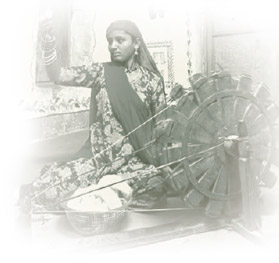
The most important goal before the nation is working towards transforming India into a developed nation by 2020. This necessitates not only successful adoption of latest technologies but developing appropriate technologies. The parameters that determine national development will also keep changing throwing up new challenges.
A major challenge India is faced with in achieving this goal is the need to bridge the divide in economy, prosperity and quality of life based on geography, gender and other factors. India is a country of diversity - social, cultural and economic and this diversity which is the fabric of the nation has tremendous impact on achieving prosperity. Science and Technology can be a powerful tool in bridging the divide and achieving inclusive development if only it is employed with this purpose.
There is a vast rural and urban divide and the magnitude of this is increasing steadily. The second major striking divide is gender based. India has produced outstanding women achievers in all walks of life. They form but a miniscule of the female population of the country. Rural women who constitute nearly 36% of the total population are yet to have access to basic facilities. Poverty hits women the hardest. Seventy percent of poor women in India cannot read or write. Over 100,000 women die from pregnancy-related causes each year which is more than anywhere else in the world and many more suffer debilitating complications.
The United Nation's Millennium Development Goals (MDGs), set to overcome poverty, exclusion and environmental problems by the year 2015 have identified eight international development goals that include eradicating extreme poverty and hunger including achieving decent employment for women, universal primary education, promoting gender quality and empowering of women, reducing child mortality, improving maternal health, combating disease epidemics such as HIV/AIDS, among other things. Interestingly, even a cursory look at these goals drive home the point that almost all of them center round the welfare of women directly or indirectly and also spell that the aim of the MDGs can never be achieved sans the participation and unfettered involvement of women.
There is also the need to promote the participation of people with disabilities, the blind, partially blind, physically challenged and so on in the society who like women are often excluded from mainstream development. Unfortunately it is exactly this stream that is hit most with any adversity, natural or man-made.
 With rapid technological developments, inequality will further worsen unless special efforts are made to address the needs of the poor, women, rural, disabled and others who are unreached or less reached. Multi-pronged strategy is required to make India's innovation system meet the needs of all classes in the society. With rapid technological developments, inequality will further worsen unless special efforts are made to address the needs of the poor, women, rural, disabled and others who are unreached or less reached. Multi-pronged strategy is required to make India's innovation system meet the needs of all classes in the society.
It can be envisaged that most of the knowledge and technologies needed to achieve MDGs already exist. Now there is a need to focus on innovations to deliver the benefits of science and technology across the society which can ultimately lead to inclusive development. There is a need to evolve and promote technologies to increase accessibility, affordability and also create sustainable livelihood and productive income generating opportunities for those who have been excluded from such opportunities. There is a need to improve linkage between technology development and technology applications by strengthening the ties between basic research and business.
The innovative abilities of a large section of the society in the form of underprivileged has been ignored and constrained because of the failure to impart them with necessary education, skills and knowledge and also creating an ecosystem that promotes their participation. The need of the hour is to strengthen the capabilities of those ignored so far and tap their potential in nation building activities.
Describing the Rural Poverty Report 2011, released recently by the UN international fund for Agricultural Development (IFAD), the IFAD President Kanayo F.Nwanze said "The report makes clear that it is time to look at poor smallholder farmers and rural entrepreneurs in a completely new way-not as charity cases but as people whose innovation, dynamism and hard work will bring prosperity to their communities and greater food"
Thanks to the vision of the great architect of Science and Technology programme of India, Pandit Jawaharlal Nehruji, India with massive Science and Technology infrastructure spread across the country, has a strong S&T manpower with over 400 universities and several research institutions in diverse sectors churning out qualified science graduates.
The developments in the field of ICT have had an unprecedented impact on the quality of life world over. It is the opinion of experts that ICT integrated with space technology has the potential to fuel the global economy and successfully combat global poverty. India is in the forefront in both these arenas and the vast reach and tremendous impact these technologies have had on the life of people in India is globally visible. Biotechnology and Nanotechnology are other areas with similar potential in addressing various needs of common man including health, food and nutrition, energy and environment.
Time is ripe to convert knowledge into wealth and welfare of people through the process of innovation more effectively. The 99th science congress is intended to focus on the Indian innovation system and draw the attention of the scientists, the innovators, the public and private sectors and the policy makers towards the need to harness the power of science and technology in empowering every citizen. |



